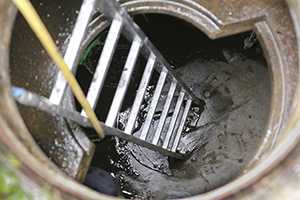Evaluation of Water Cistern Contamination and Health Risks in the Navajo Nation

Approximately 14,347 households (30%) on the Navajo Nation are not connected to a public water system. Providing access to a public water system is particularly problematic due to limited available water sources and widely distributed housing. As a result, some households haul water from unregulated, untreated water sources.
Households with chronically ill or medically impaired individuals are often provided cisterns (underground storage tanks) from the Indian Health Service (IHS) as a "medical referral". There is great concern from the Navajo Nation Environmental Protection Agency (NNEPA) that these cisterns may actually become a health hazard due to biological and chemical water contaminants.
To determine whether cisterns on the Navajo Nation contain biological or chemical contamination at levels that can cause human health effects, water samples were collected and analyzed for biological contaminants such as total coliform, E. coli, Cryptosporidium, Giardia, norovirus, enterovirus, legionella, and Salmonella. Water samples were also analyzed for chemical contaminants such as arsenic, uranium, cadmium, and lead, as well as nitrates and atrazine.
Thirty-nine percent of the study population had urine uranium levels that were higher than the 95th percentile of 2007–2008 NHANES. Bacterial contamination levels were higher in hauled water samples, indicating the need for safe water hauling and storage practices and educating the public about potential health risks associated with unregulated water sources.
Reference: CDC. Investigation of Drinking Water Exposures from Unregulated Water Sources in the Dennehotso, Ganado, Lower Greasewood, Red Mesa, and Steamboat Chapters, Navajo Nation, September 7th- 25th. Navajo Nation Human Research Review Board Final Report. Window Rock, AZ. June 11, 2011.
- Page last reviewed: April 1, 2016
- Page last updated: April 1, 2016
- Content source:


 ShareCompartir
ShareCompartir